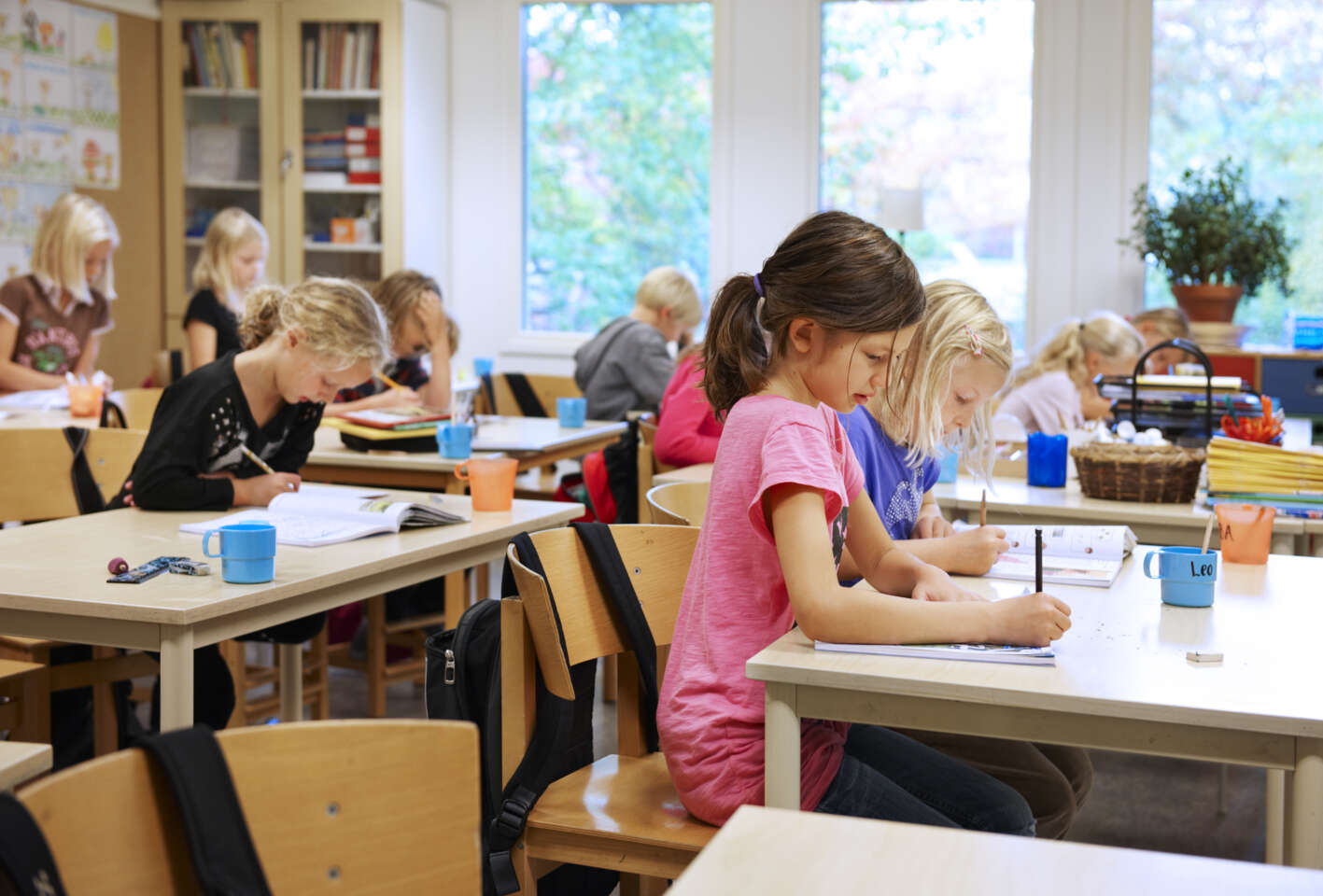
Good indoor air in schools raises pupil enjoyment and improves learning outcomes. If classrooms are too warm, the students’ performance decreases. Sufficient and balanced air-conditioning keeps the temperature at a pleasant level.
Pleasant, safe and stimulating environments that promote health and well-being are also environments that promote learning. The pleasantness and healthiness of an environment are affected by factors such as indoor air quality and temperature, acoustics, lighting and cleanliness.
Optimize pupil performance
Pupils’ performance is best when the temperature is right.
In the “Indoor air quality and learning in schools” study, carried out in Finland, it was observed that sixth-grade students that have never felt that the classroom temperature is too high solved an average of 4% more mathematics tasks than students that felt every day that the classroom temperature was high. The study involved results from over 300 schools from the 2007 nationwide mathematics assessment.
The lower the temperature, the better the results
In the US, a study was carried out on the effects of temperature and circulation on the learning results of fifth-grade pupils in 70 schools during the 2008–2009 academic year. The lower the classroom temperature was, the better the results obtained by the pupils in a mathematics test. The results for tests of reading and natural sciences were similar, but the connection was not so clear. The classroom temperature varied between 20 and 25°C. In Denmark, the effects of room temperature on pupils were studied during the 2004–2005 academic year. Results for tests of mathematical and linguistic skills showed clear improvements when the classroom temperature was lowered using cooling devices from 25 to 20°C. Boosting the air-conditioning also improved results.
Excessive temperature increases risk of illness
The research data indicates that symptoms relating to indoor air increase once the room temperature rises over 22°C. High indoor temperature and other indoor air problems can cause symptoms such as tiredness, dizziness, nausea, coughing and dryness of the eyes, airways and skin. High temperatures also increase the risk of getting upper respiratory tract infections. Excessively warm indoor air is most harmful to pupils that have allergies, asthma or some other hypersensitivity. Immunologic defence problems make people susceptible to the effects of indoor air. Users of contact lenses suffered more than others from dry and warm indoor air.
Individual perception
Perception of temperature is individual. The body’s equilibrium temperature determines whether the room temperature is felt to be right or not. At the equilibrium temperature, the energy produced by the body’s metabolism is equal to the energy being transferred from the body to the surrounding environment.
On average, people are comfortable with an indoor temperature of between 20 and 22°C, but some of us feel uncomfortable even at these temperatures. Perception of temperature is individual. The pleasantness of the room temperature also depends on factors such as clothing, air humidity, and air circulation speed.
Indoor temperature can be controlled in Adapteo’s module schools.
Controlling air conditioning
Classroom temperature increases if air-conditioning is insufficient.
The Finnish study also found that the more pupils there were in the classroom, the lower the circulation level was for each pupil.
In this situation, the classroom temperature could easily rise. Around 3% of pupils reported that the high classroom temperature had a negative effect on their studies on a daily basis, and a further 3% reported that it had a weekly effect. The measured temperature was unsatisfactory in 11% of schools during the heating season and in 18% of schools outside of the heating season.
Indoor temperature can be controlled in module schools
In Adapteo’s module schools, there are room-specific temperature controls with which users can select the appropriate indoor temperature. In addition, the up-to-date air-conditioning technology ensures sufficient air circulation.
We can obtain the best possible air quality by planning ventilation in a location-specific manner. Our ventilation equipment is able to automatically take into account changing ambient conditions, and it can also be adjusted. If, for example, the room has been designed for 20 pupils, but there are currently more children in the classroom, the settings will need to be changed."
-Niko Oksa, Technical Sales Manager, Adapteo Finland
In winter, classrooms are heated when needed using either electric radiators or water-based heating systems. Also, if in summer the classroom is getting baked by the sun, blinds can be installed on the windows.